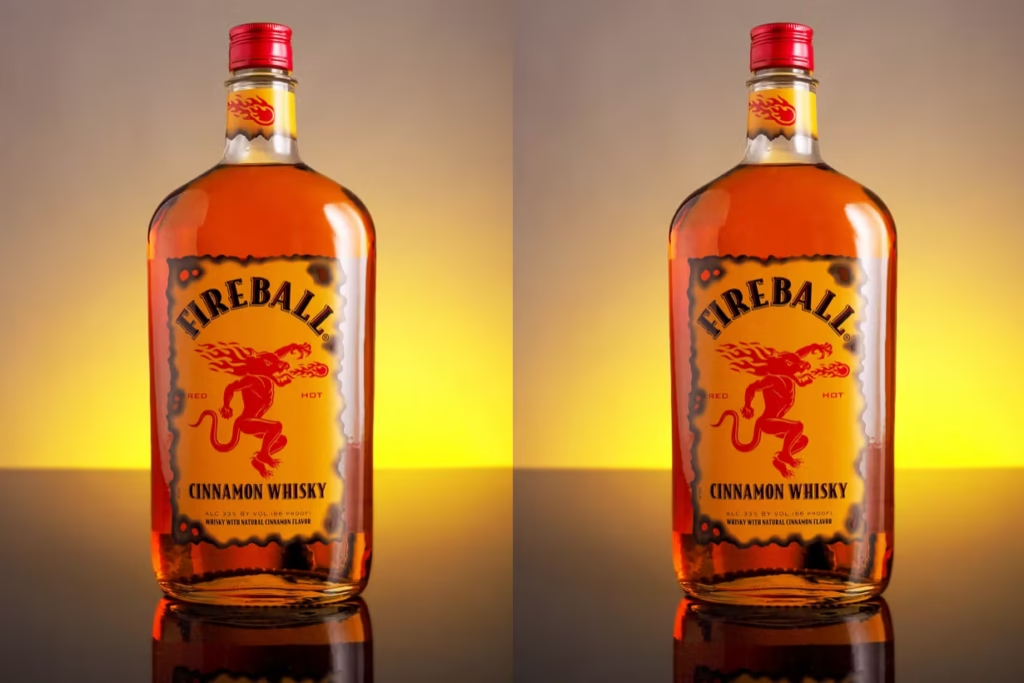
The Fireball Cinnamon Whisky brand has recently found itself embroiled in a class-action lawsuit that alleges consumer deception. At the center of the controversy lies the differentiation—or lack thereof—between two products: Fireball Cinnamon Whisky and Fireball Cinnamon, the latter being a malt- or wine-based beverage without actual whisky content. Below, we delve into the details of the lawsuit, the key distinctions between the products, and what this case means for consumers and the alcoholic beverage industry.
The Allegations: Deceptive Marketing Practices
The lawsuit, spearheaded by plaintiff Anna Marquez, claims that Sazerac Company, the producer of Fireball, misled customers into purchasing Fireball Cinnamon under the belief that it contained whisky. This confusion allegedly arises from the striking similarities in the packaging of the two products.
Key Claims in the Lawsuit
- Labeling Confusion:
Fireball Cinnamon Whisky bottles are labeled with the words “Fireball Cinnamon Whisky”, whereas the non-whisky product reads simply “Fireball Cinnamon”. Despite this distinction, the lawsuit argues that the packaging design and branding create a deceptive resemblance. - Ambiguous Ingredient Description:
The label on Fireball Cinnamon states, “Malt Beverage With Natural Whisky & Other Flavors and Caramel Color”. According to the lawsuit, this phrasing is misleading because it implies the product contains whisky as an ingredient rather than merely being flavored to resemble whisky. - Retail Placement and Product Segmentation:
Fireball Cinnamon is sold in gas stations and convenience stores, venues typically restricted to selling beer, malt beverages, and wine. Conversely, Fireball Whisky is available in liquor stores. The lawsuit claims this segmentation was not adequately communicated to consumers, further exacerbating confusion.
Distinguishing Fireball Cinnamon Whisky from Fireball Cinnamon
Understanding the differences between these two products is crucial for consumers seeking clarity.
| Feature | Fireball Cinnamon Whisky | Fireball Cinnamon |
| Alcohol Content (ABV) | 33% | 16.5%-21% (varies by base ingredient) |
| Base Ingredient | Distilled whisky | Malt or wine |
| Retail Availability | Liquor stores | Gas stations, convenience stores |
| Label | Includes “Whisky” | Omits “Whisky” |
Implications for Consumers
The lawsuit highlights broader issues in the beverage industry related to transparency and labeling practices.
Consumer Expectations
Consumers often rely on branding and packaging cues to make informed purchasing decisions. The lawsuit underscores the importance of clear and unambiguous labeling, especially when similar products are marketed under the same brand.
Legal Precedents
If the court rules in favor of the plaintiff, it could establish a legal precedent, compelling beverage manufacturers to adopt stricter labeling standards. This case may also lead to increased scrutiny of marketing practices in the alcohol industry.
Recommendations for Transparency in Product Labeling
To avoid similar controversies in the future, manufacturers should consider the following:
- Distinct Branding:
Products with significant differences in composition should have clearly differentiated packaging to minimize consumer confusion. - Ingredient Clarity:
Labels should explicitly state whether ingredients like whisky are present or merely used as flavoring. - Educational Campaigns:
Companies should invest in marketing campaigns to educate consumers about product differences, especially when introducing new variations.
Conclusion
The Fireball Cinnamon vs. Fireball Whisky lawsuit serves as a pivotal case in the ongoing conversation about product labeling and consumer protection. The allegations of deceptive marketing practices highlight the potential risks for companies that fail to provide clear distinctions between similar products. With Fireball Cinnamon’s labeling and placement creating confusion, it’s evident that transparency in the beverage industry is paramount.
As the legal battle unfolds, both consumers and manufacturers must prioritize clarity to avoid misunderstandings. For consumers, it’s important to read labels carefully and understand the key differences between products, particularly when they share similar branding. For the industry, this case underscores the need for rigorous labeling standards and consumer education to foster trust and prevent legal complications.
Ultimately, this lawsuit could spark significant changes in how companies approach product differentiation and consumer communication, ensuring that future products are marketed in a way that leaves no room for confusion.
